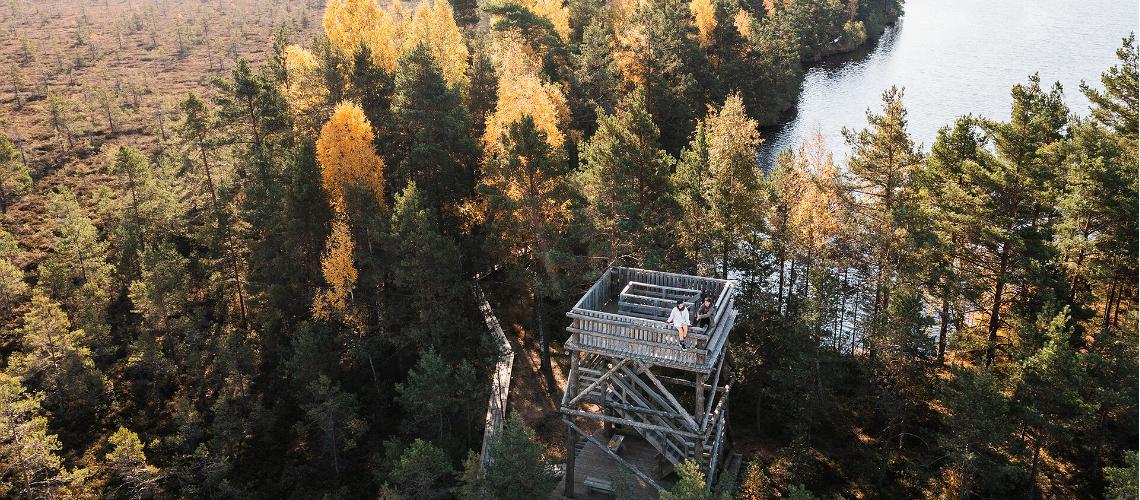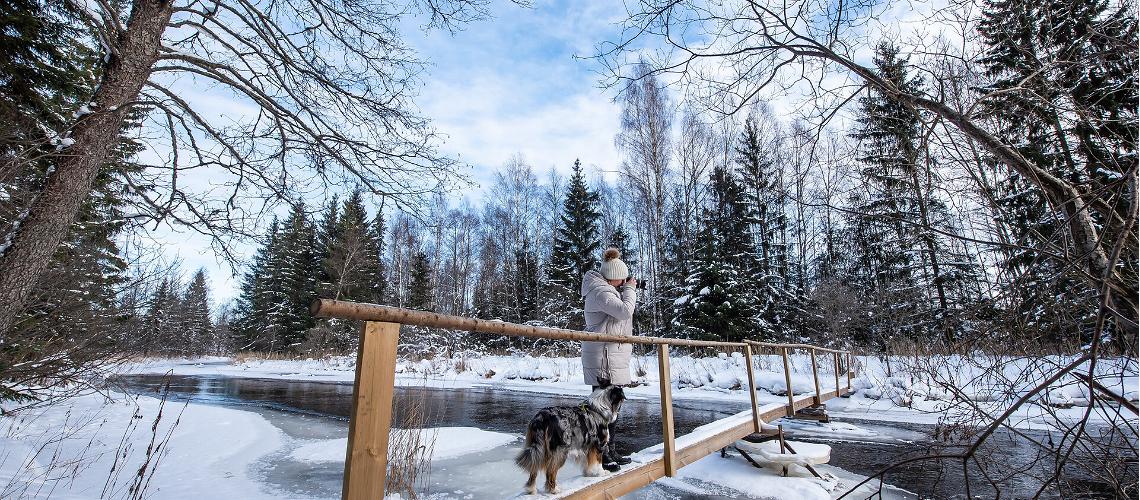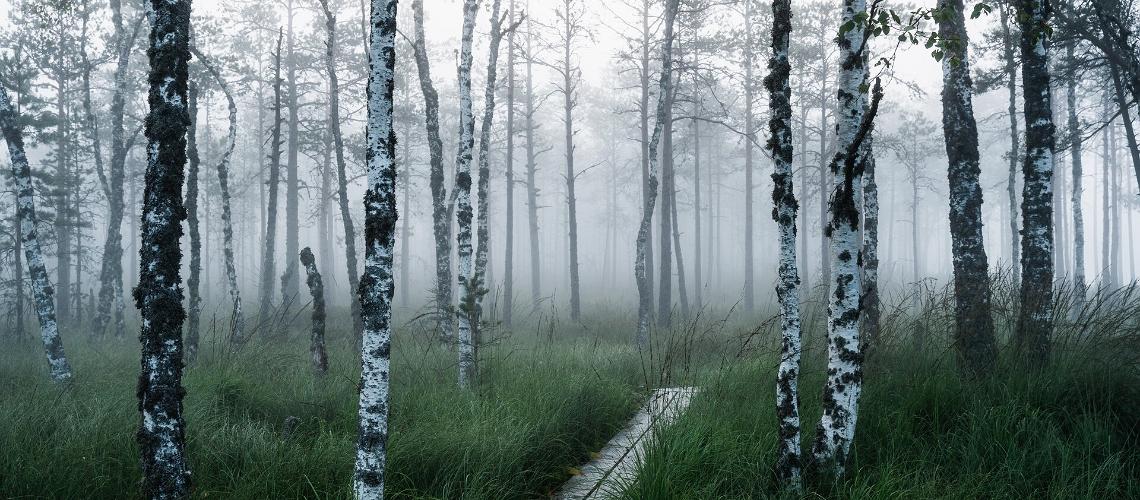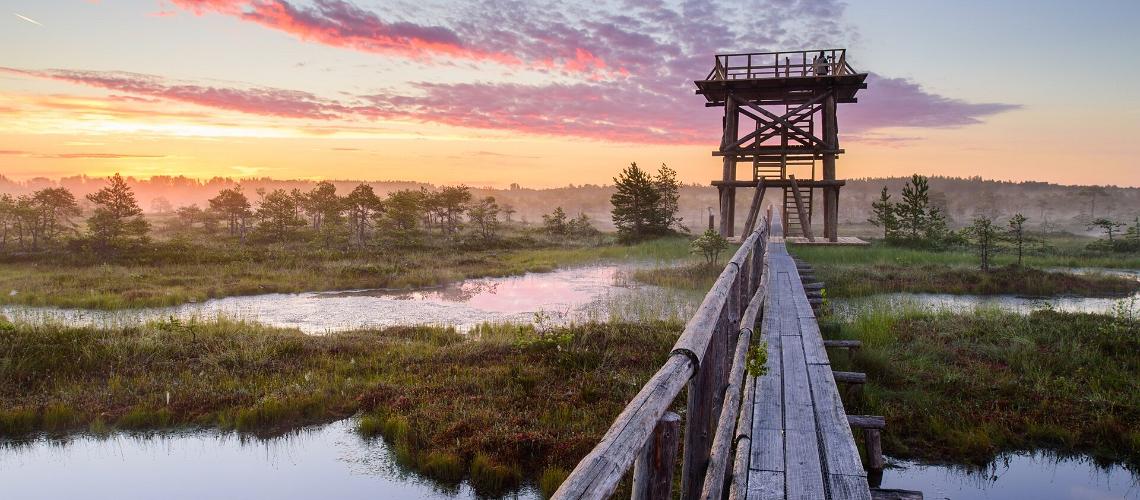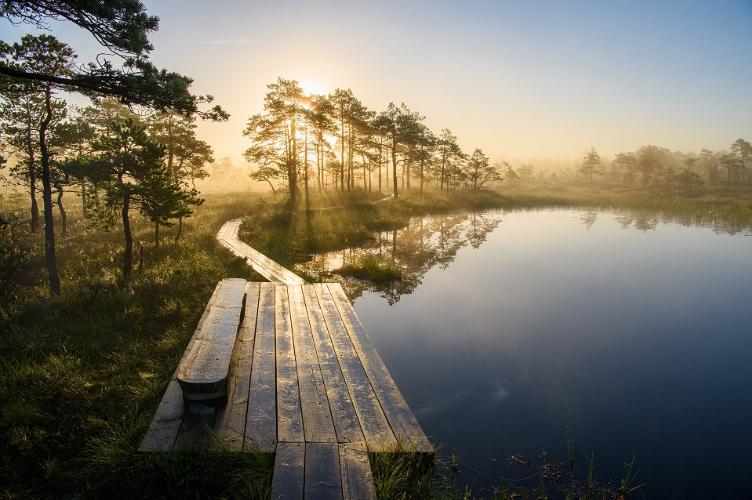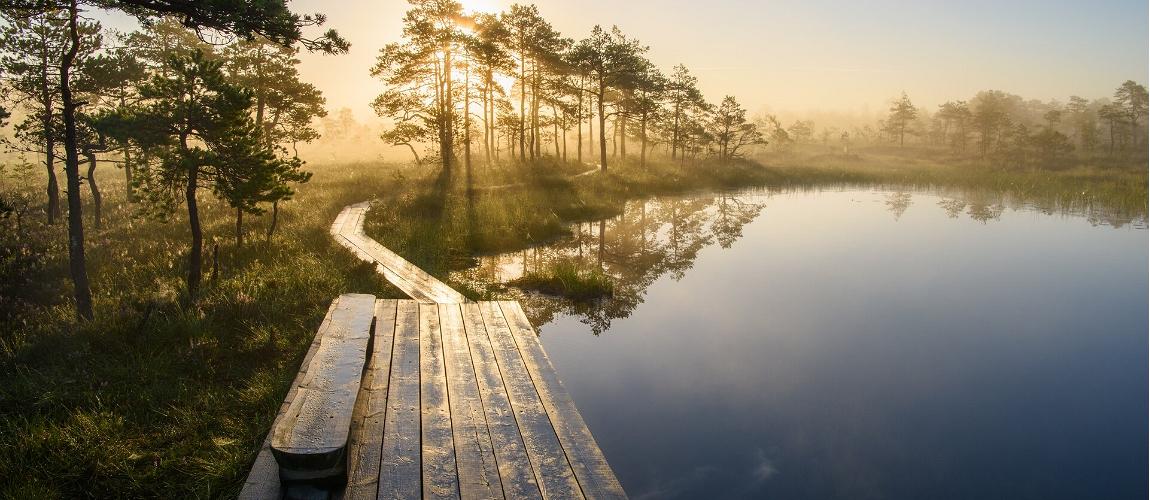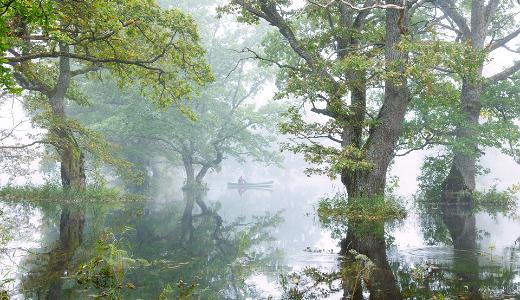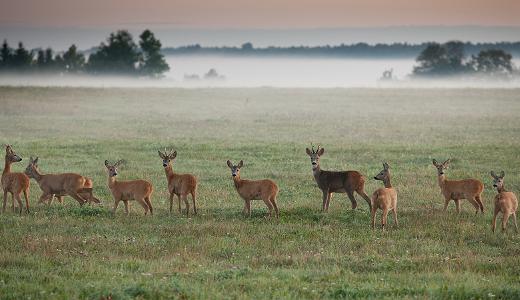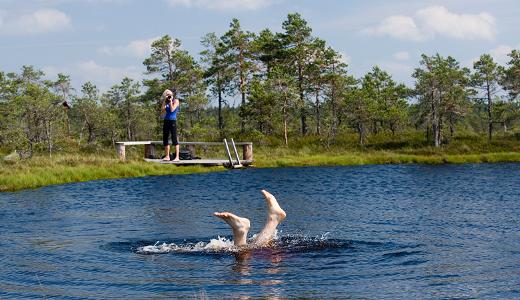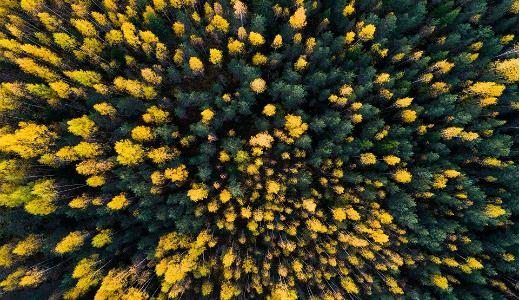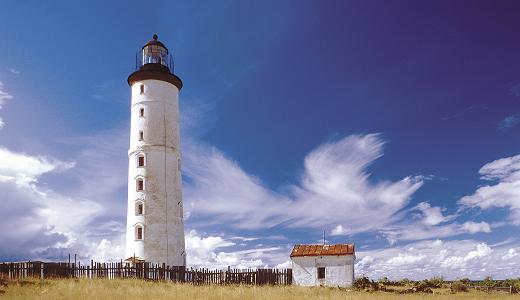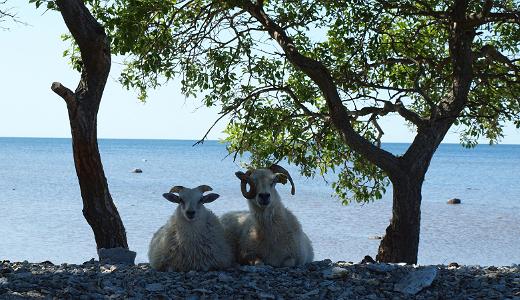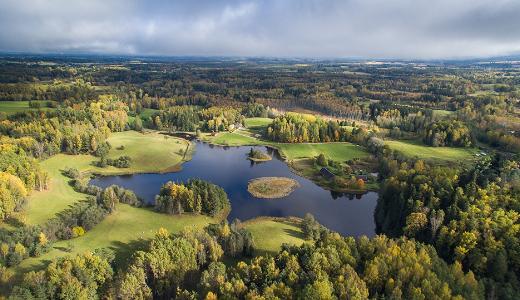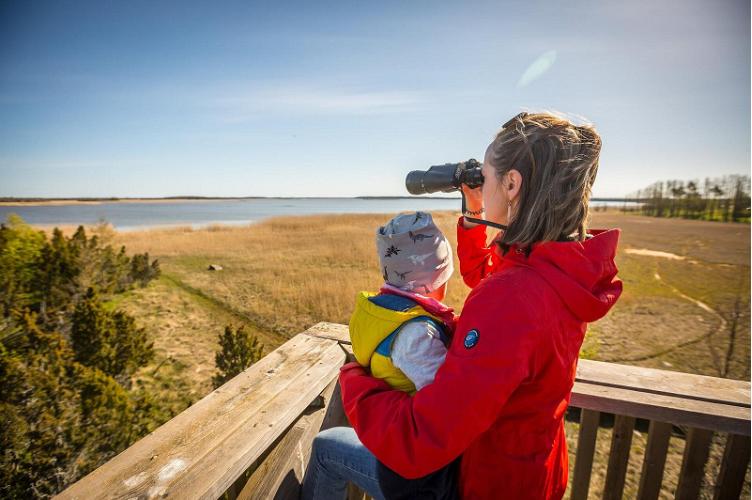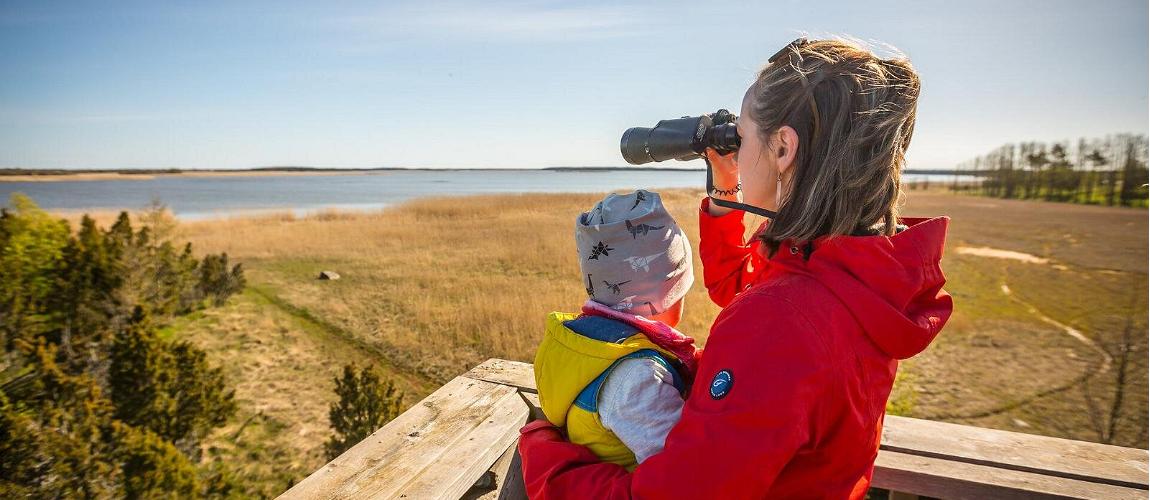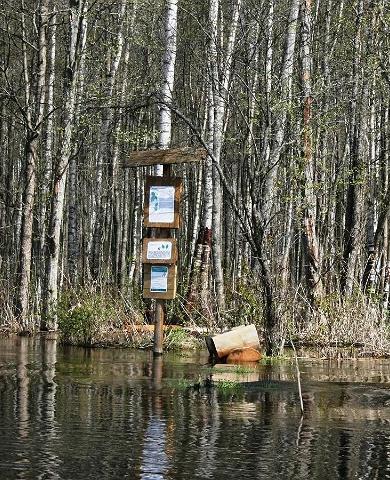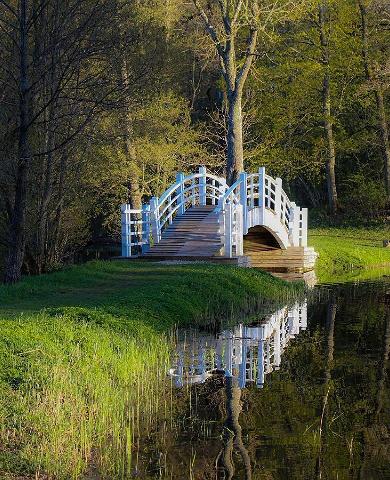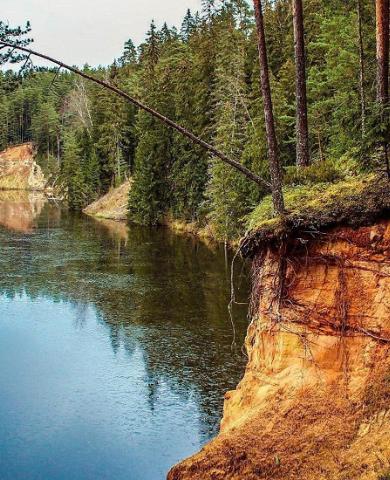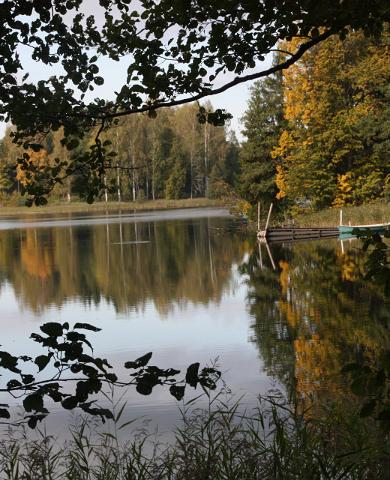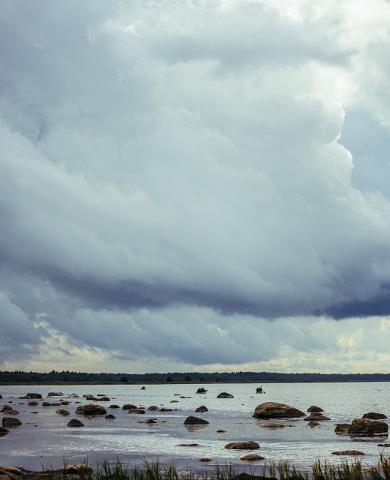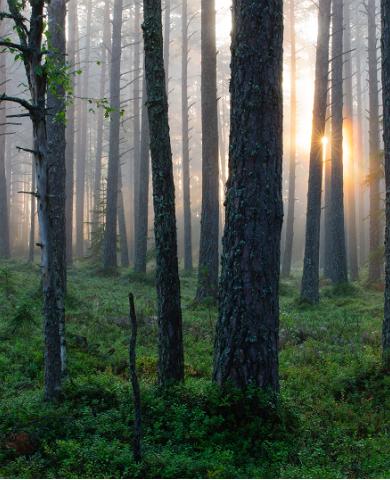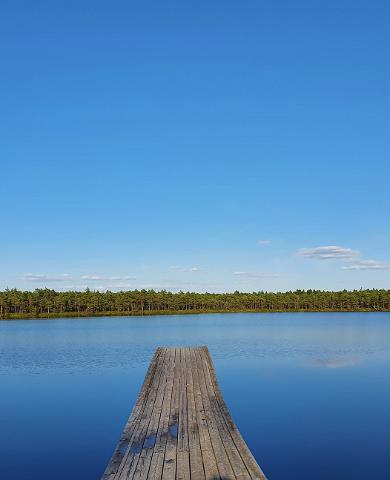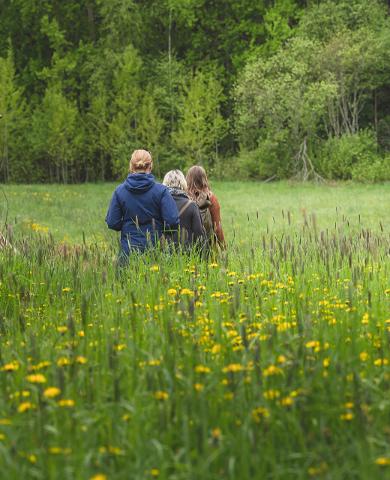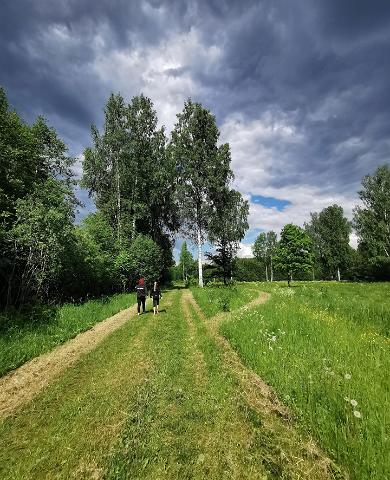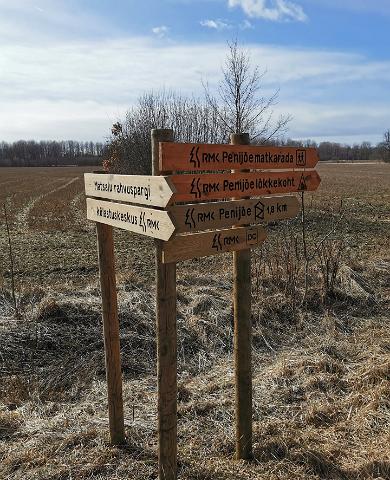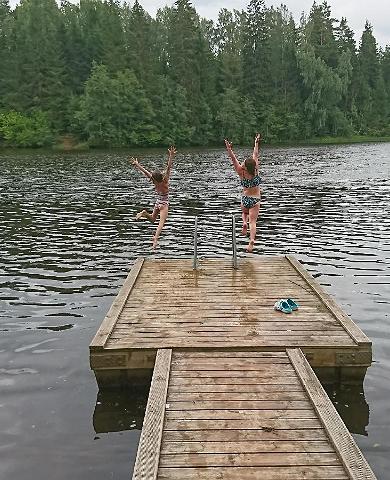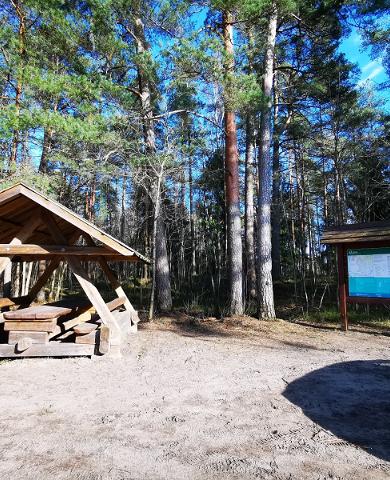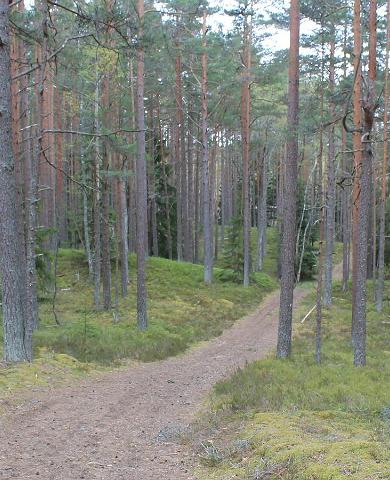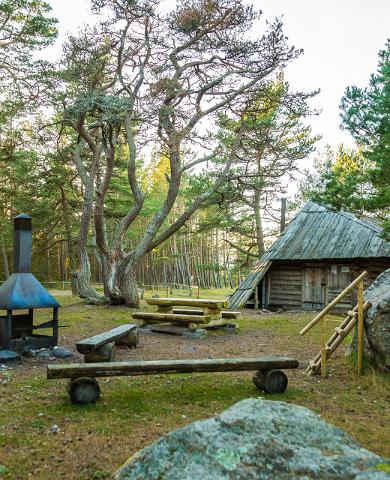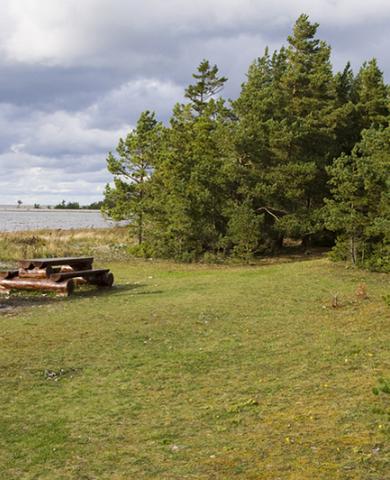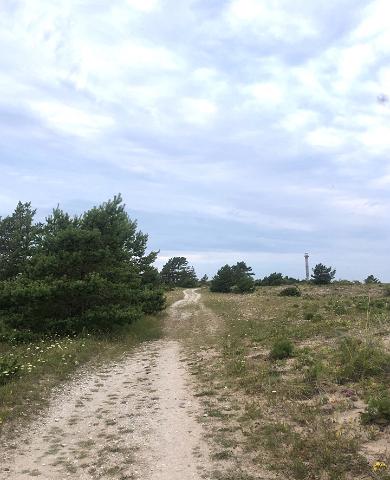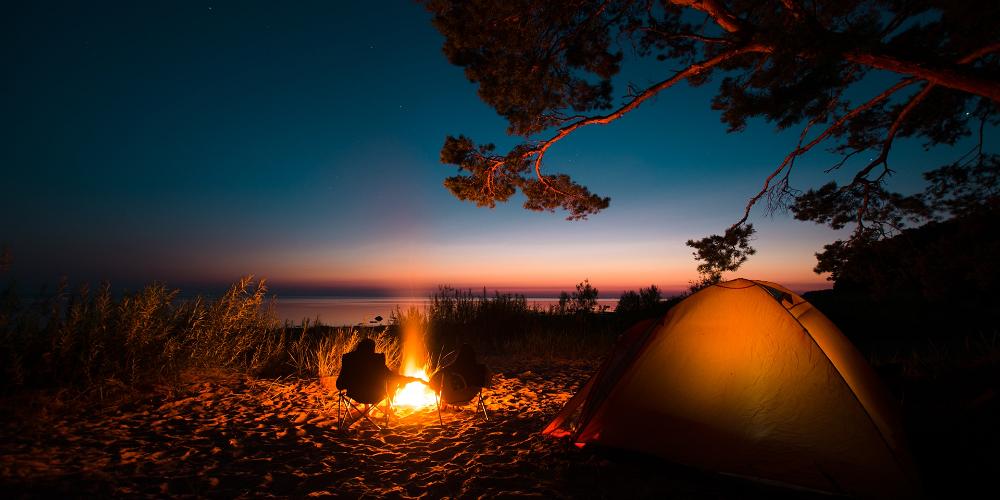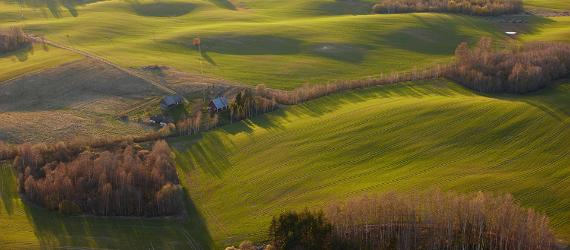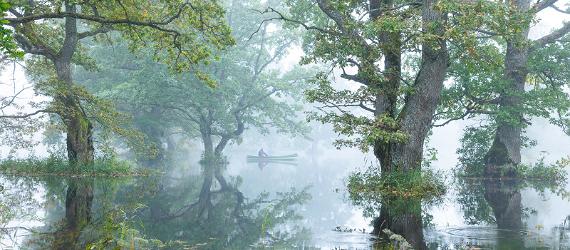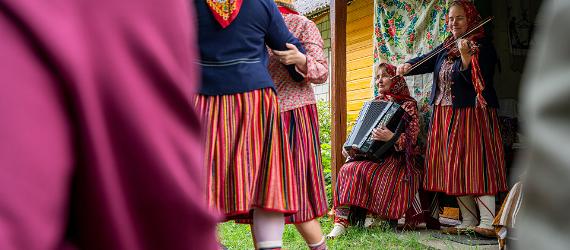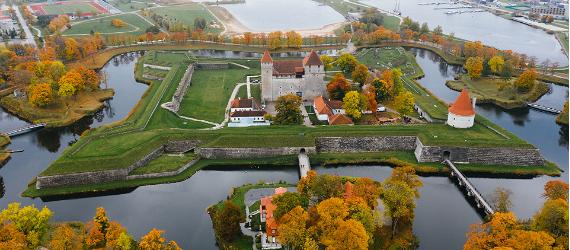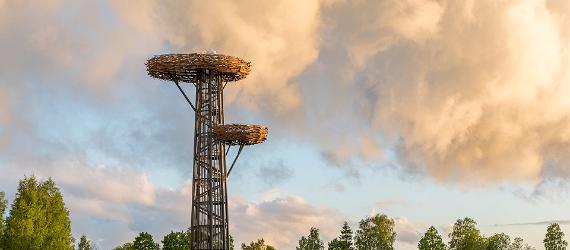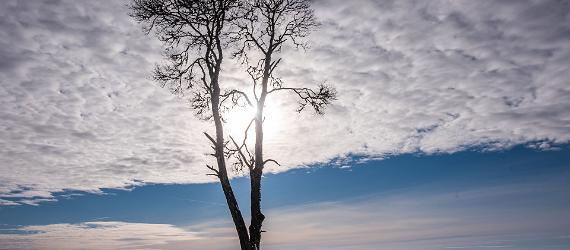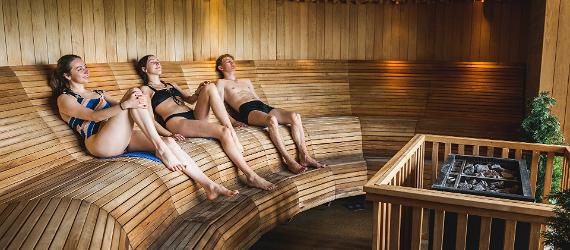You will find enticing hiking trails in both nature reserves and national parks, through forests and bogs, and up and down the coast. Hiking is the best way to get to know the diversity of Estonian nature.
Hiking trails for all seasons
With some of the cleanest air in the world and one of the lowest population densities in Europe, Estonia's wild nature promises adventure, relaxation, and a deep connection to the environment. Options for biking, skiing, and caravan camping abound, but nature is still best explored on your own feet.
You can choose a route depending on your interests and fitness level. From easy boardwalks to long routes requiring a lot of strength and stamina, there is something for everyone — unless you're a mountain climber.
You can hike in national parks, nature reserves, bogs, dense forests, rugged coastal landscapes, or even stroll through city parks. You can hike with a guide in a group or strike out on your own. Hiking trails meander through diverse cultural landscapes and pass by historical monuments and ancient geographical sites.
Finding joy in all four seasons
Hiking is not just an activity for the summer. In springtime, nature awakens after the long winter. Greens are the brightest, sunrises and sunsets are spectacular, and silence is like a balm for the soul. In early spring, you can experience Estonia's infamous fifth season in Soomaa National Park. This phenomenon occurs when water levels rise dramatically as the snow melts or during intense rains. May is the best month to see flowers blooming, with snowdrops marking the end of winter, crocuses blanketing the forest floor, tulips blooming in gardens around the country, and lilacs filling the air with a lovely perfume.
Autumn brings cooler temperatures — and fewer mosquitos! The trees change colors, and the forest is filled with the scent of falling leaves. Even the bogs turn golden. If you know where to look, you can forage for mushrooms and berries. And if you don't know, you can always go with a guide! Like spring, autumn is also the season for bird migrations. Matsalu National Park and Vilsandi National Park are two of the top spots for bird watching in Estonia.
Winter hiking is the most challenging but can also be the most rewarding. More gear is required to stay warm in the winter, and there are fewer hours of daylight. Luckily many hiking trails have spots where you can light a campfire and warm up after your hike. Very lucky winter hikers might hear wolves howling or spot prints in the snow, as these elusive animals are easier to track when there's less foliage for them to hide in. If you can brave the cold, the absolute silence and crystalline stillness of the winter landscape will fill you with wonder.
Of course, summer is the peak hiking season in Estonia, and the long summer days mean you can stretch your hikes out for as long as your legs can handle it. Always pack a swimsuit, as many of Estonia's hiking trails have spots for taking a dip to cool off — try the peaty waters of bog lakes, the sandy shores of the Baltic Sea, or jump from a pier into a lake.
The most popular trails in Estonia
Estonia's nature trails will take you through stunning national parks, forests, wetlands, and coastal areas. These 10 hiking trails range from easy to advanced, and some are even accessible for wheelchair users and strollers.
Find the perfect hiking trail for you
Information on search results display in Article 12 of the Terms of Use.
The longest hiking trails in Estonia
Estonia may be a compact country, but that doesn't mean you have to be satisfied with short hiking routes. There are three major, long-distance hiking trails that either cross Estonia or run the length of the country. Lonely Planet even nicknamed the two Baltic Trails — the Coastal Route and the Forest Route — "Europe's longest meditation practice."
These three trails are well-marked with services and accommodation options to be found along the way. If you don't want to pack all of your gear with you, you can plan a short route. With some advance planning, it's possible to hop on the trail for a day and take public transport back to your base. Ambitious long-distance hikers can even continue on through the rest of Europe.
- The Baltic Forest Trail: This trail is part of the E11 long-distance European hiking route, passing through the most forested areas of Latvia and along Eastern Estonia, including through three national parks. The route is divided into 50 stages, each about 20 kilometers long. You can cover the entire route or a large section as a multi-day hike, but of course, individual day trips are also possible. The sections have different levels of difficulty so there is something for every fitness level.
- The Baltic Coastal Hiking Trail: This hiking trail runs along the coast of the Baltic Sea and is part of the European long-distance hiking trail E9. The total length of the route is 1200 km, of which 580 kilometers are in Latvia, and 620 kilometers are in Estonia. The entire journey takes about 60 days, but the trail is divided into sections, which allows you to choose the distance that suits you best. The Estonian leg of the trail takes about 30 days to complete and starts in either Ikla or Tallinn, depending on the direction of your hike.
- The Peraküla-Aegviidu-Ähijärvi Hiking Trail: The longest hiking trail in Estonia starts at the Nõva Nature Center in Peraküla. It passes through nine counties, a whole series of protected areas and exhibits a lot of wonderful landscapes of Estonia on 820 kilometers. The trail is marked in nature with white-green color markings and directional signs.
How to prepare for your hike
As the saying goes, "Forewarned is forearmed." When you go into nature, it's important to be prepared for any difficulties you may encounter.
First off, wear proper clothing. Estonia's weather can vary considerably depending on the season, as can the trail's terrain. Your clothing should keep you dry, warm, and well-protected from sun and rain. For example, warm, waterproof shoes with good grip are important for hiking in winter as you may come across ice, slush, or deep snow. Summertime hikes call for mosquito and tick repellant, sunscreen, and a hat. In all seasons, carry along water, snacks, a map, a compass, and rain gear. 4G and 5G Internet access is generally strong throughout Estonia, but it's always good to have maps downloaded on your phone in case you cross an area where the signal is weak.
Weather is the most serious thing to consider during outdoor adventures in Estonia. While there are healthy populations of bears and wolves, they will be more scared of you than you are of them. If you do happen to catch sight of one when in the forest, consider yourself very lucky!
The Estonian Ministry of Forestry (RMK) is another good resource to help you plan a hike in Estonia. On its website you can find information about hiking trails and lots of practical advice. They manage most of the country's publics campsites and make sure all the necessary equipment, such as shelters, toilets and fire pits, are in working condition.
Fancy a night or two in nature?
Hiking doesn't mean you have to sleep rough. There are plenty of cozy, yet luxurious places to stay tucked deep in Estonia's forests or along the country's coastline. With sustainability in mind, these accommodation options give you a chance to go green while exploring nature. As a bonus, they might even offer a hot sauna where you can rest and relax your muscles after a day spent outside.
Hiking and camping go hand-in-hand. You'll find free RMK campsites all around the country, many right next to hiking trails. Even if you don't stay overnight, campsites are perfect for lighting a campfire (so long as it's allowed) and warming up after a wintertime tromp through the snow.















